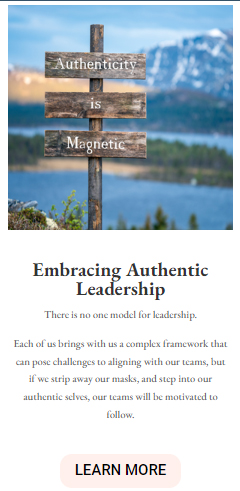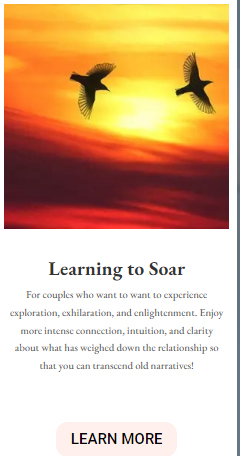(even when you’ve got performance anxiety!)
When your position or promotion depends on your performance, failure is not an option! Many of us experience some form of anxiety or another. But, when you suffer from performance anxiety in the workplace, it can have catastrophic effects. Fear not, performance anxiety can be resolved relatively easily. Some of the common interventions for performance anxiety include medications, behavioral therapy, cognitive behavioral treatment, breathwork, guided imagery, hypnotherapy and 360° feedback.
Medications
The most common medications for performance anxiety are anti-anxiety agents and Beta-blockers. For those whose jobs require public speaking, Beta-blockers can be taken episodically to reduce the anxiety that is specific to the speaking engagement. They are not taken daily, but instead taken to reduce anxiety that only arises when the person is called to perform. For those whose anxiety is more pervasive, a daily anxiolytic may prove more effective. For instance, an introvert who has a managerial position that requires frequent communication with team members might do well on a low-dose anxiolytic like Buspirone. For those whose performance anxiety sparks a more intense reaction, even panic, anxiolytics like the Benzodiazepenes may be more useful. Unfortunately, the Benzodiazepenes (e.g. Ativan, Xanax, Valium) are habit-forming and must be carefully monitored. Brief, infrequent use can provide relief and allow the person to function normally, while long-term or consistent use can generate rebound anxiety that is even more difficult to manage.
Behavioral Therapy
The most common type of behavioral intervention for performance anxiety on the job involves the reinforcement of positive steps (performing functions such as public speaking) and extinguishing reactions that inhibit function (eg. Sweating profusely, vomiting, running out of a staff meeting). When working with a behavioral therapist, you will likely use some form of systematic desensitization. Systematic desensitization is a method of teaching a person to invoke the relaxation response while they are experiencing an anxiety-provoking event, object, or life form. During this treatment, the person identifies the most anxiety-provoking experience and that is placed at the top of the anxiety pyramid. Then, the person identifies the least anxiety-provoking experience and that is placed at the base of the pyramid. The person continues to identify those experiences which are more and more anxiety-provoking until the pyramid is complete. For example, if a person has a phobia about speaking in public, actually being required to deliver a presentation to a room full of 500 people might be placed at the top of a pyramid. Having a conversation about someone who delivered such a presentation five years ago might be placed at the bottom of the pyramid. Once the anxiety pyramid is complete, the therapist teaches the client how to invoke the Relaxation Response. After some practice, the client is exposed to the least anxiety-provoking stimulus, and is then asked to generate the Relaxation Response. Level by level, the person is exposed to situations that have previously triggered anxiety and is engaged to produce the Relaxation Response until the client is capable of relaxing, even under the circumstances that were previously considered the most anxiety-provoking! The combination of learning techniques such as the Relaxation Response with the reinforcement of forward movement, will likely reduce the majority of the Performance Anxiety. Repetition over time further ensures that the anxiety response or its symptoms will extinguish over time.
Cognitive Behavioral Therapy
There is quite a bit of research to suggest that thoughts, and the emotions that they trigger, are more than likely responsible for performance anxiety in the workplace. In Cognitive Behavioral Therapy (CBT), the client first describes the problematic situation (e.g. presenting at a staff meeting). The client then identifies the emotions that are experienced in response to the disquieting situation and rates the intensity of each. Then, through a process referred to as Socratic Questioning the therapist and client uncover all of the the thoughts associated with the uncomfortable situation. The inquiry into each thought uncovers yet another, deeper thought that is likely to be associated with ever more intense emotion. When the the client and therapist reach the hot thought or the idea which seems to be foundation and generates the most intense emotion, they stop the probing. The team then considers each automatic or unreasonable thought and generates a more logical or reasonable response. Once all of the thoughts have been revised, the client identifies and rates any remaining emotions. The CBT process can be used in a variety of ways, but has been proven highly effective at eliminating thoughts which support performance anxiety. In addition, for those desiring to enhance their performance on the job, CBT offers daily affirmations which can promote self-esteem, self-confidence and self-worth. Affirmations such as “I have important information to share” and “I am a caring communicator” can enable introverted or anxious employees to shine as leaders.
Breathwork
Mindfulness and meditation are practices that can improve not just our emotional states, but the way our bodies respond and how others perceive us.
When we’re trying to manage anxiety- especially on the job- simple actions like breathing can make all the difference in the world.
One of the most effective uses of breathwork is simply taking a deep breath and tapping our counting to four while inhaling. Follow the inhale with a four-count exhale. Breathe normally, then as soon as you are able, trying increase the count to six as you inhale, and to six as you exhale. If you’re able to make it to an eight-count inhale/exhale, you will notice that you are far calmer and clear-headed!
Guided Imagery
Many of those who suffer from anxiety report that it is nearly impossible to do meditation or relaxation exercises because the act of trying to relax tends to cause the mind to get even MORE anxious! In order to side-step the mental beast, we encourage the use of verbally-guided imagery experiences.
Most of the guided imagery apps and CDs can be sampled before they are purchased. Find a voice that is easy to listen to (you’d be surprised how the sound of one voice truly differs from another!), and instructions that feel easy to complete and are relaxing by nature.
Imagine if a two-minute relaxation prior to a presentation enables you to WOW the room!
Hypnotherapy
For those who have anxiety that’s resistant to other forms of intervention, hypnotherapy can be a relaxing way to unleash whatever the tethers may be to that stubborn emotional response.
Whether it’s identifying historical origins of your anxiety or whether its assisting you to feel more aware of your ability to manage challenging situations, hypnotherapy can be a comforting, cost-effective solution.
360º Feedback
In addition to the techniques outlined above, use of 360º Feedback can drastically enhance workplace performance. The 360º Feedback Program involves the selection of a group of employees who work directly with the client. Employees complete a questionnaire and/or interview in order for the consultant to collect data about the client’s performance, work and communication style, and perceived effectiveness. The data is then compiled and presented to the client. The feedback is then used to modify styles or strategies that are sub-optimal and to promote strategies and styles that are perceived as highly beneficial. Result: improved performance of the client, increased communication between team members, and enhanced experience of respect and consideration by all those involved in the feedback process.

Sage Breslin is a prolific author. Her first book, Lovers & Survivors, as well as her work with Chicken Soup for the Soul, LLC have generated worldwide acclaim. Her second and third books, The Secret to Conception and The Secret to Conception Workbook, have enabled hundreds to resolve fertility challenges. Her fourth book, Daily Pearls: 365 Days of Sage Wisdom, blends Dr. Breslin’s musings with motivational quotes from a wide array of contributors and delivers an unforgettable and moving read. Her narrative storytelling style enables readers to experience life as she has lived it, and delivers the inspirational message so imperative for post-traumatic growth. While her colorful life has imbued her with perspective and insight, Dr. Breslin acknowledges that true wisdom is gained through collective conscious community. Her most recent book takes an even deeper dive into enabling conscious leaders to break through cognitive, emotional and energetic barriers to achieve authentic, empowered leadership. The importance of this form of transformational work is evident: Breaking Through: The Conscious Leader’s and Entrepreneur’s Guide to Amplify Intuition, Clarity, Vision, Motivation and Productivity hit best-seller status within 24 hours!









